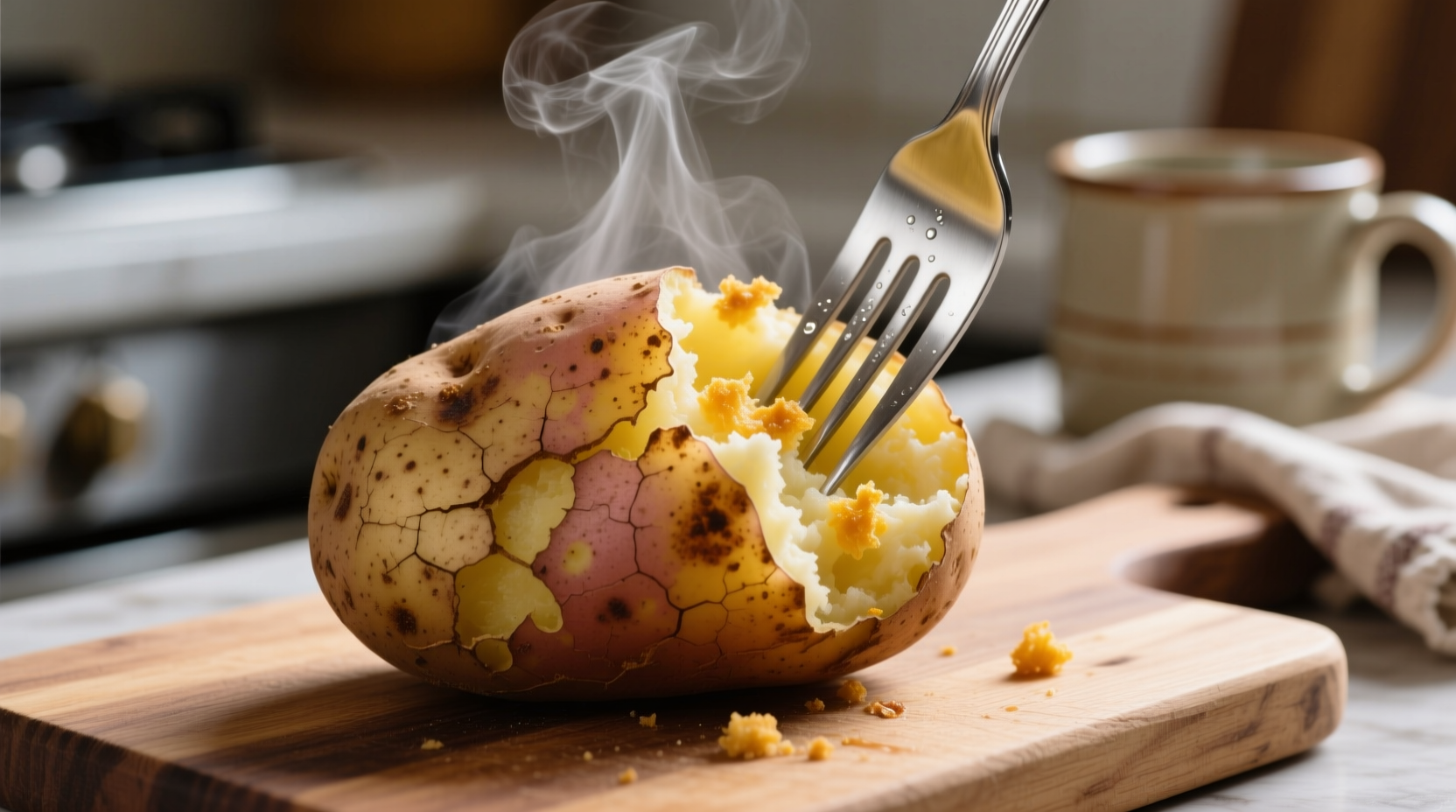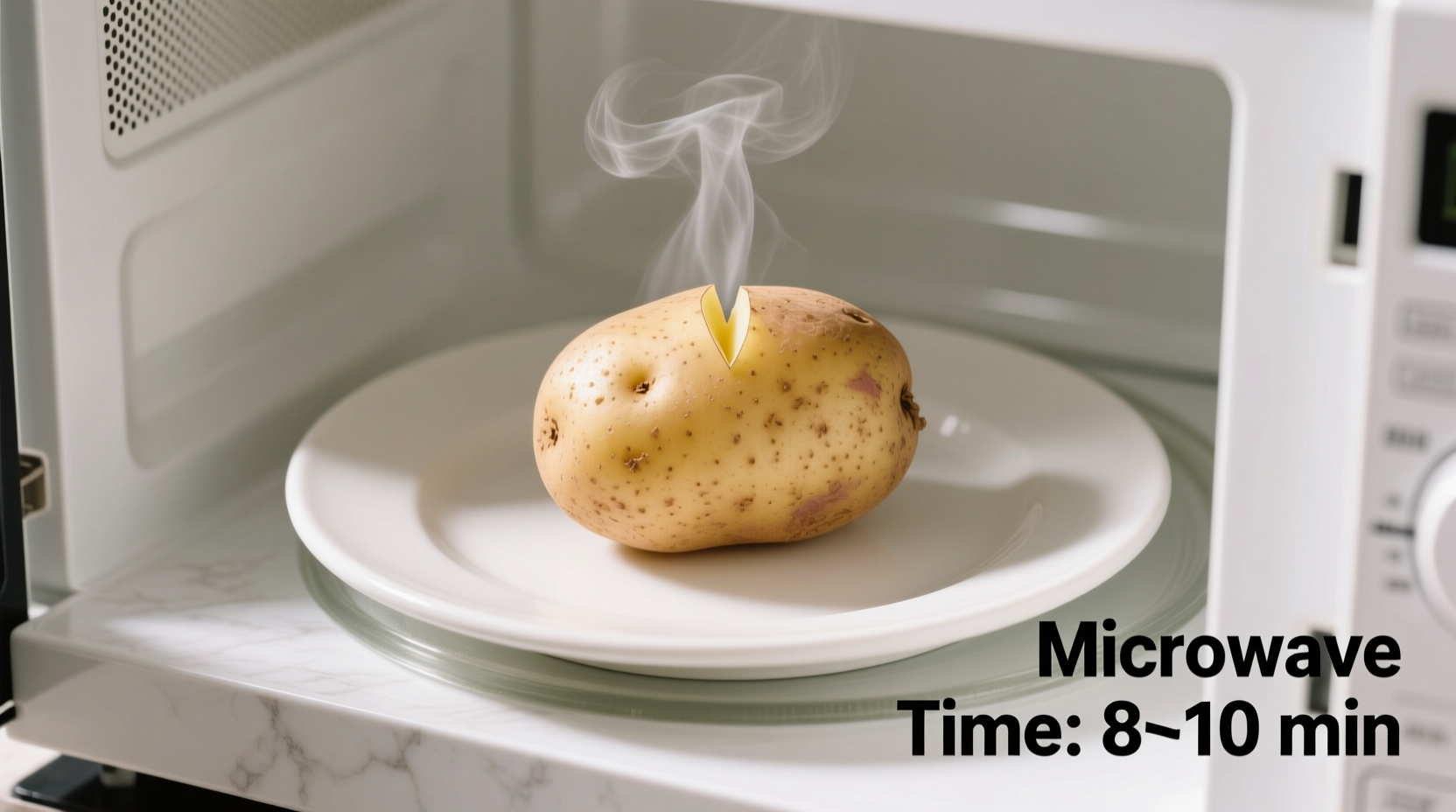Microwave one medium potato (5-8 ounces) for 5-7 minutes, turning halfway through. Larger potatoes may need 8-10 minutes. Always pierce the skin first to prevent bursting. The potato is done when a fork slides in easily and internal temperature reaches 210°F (99°C).
Discover exactly how long to microwave a potato for perfect results every time—no more undercooked centers or dried-out spuds. This guide delivers precise timing based on potato size, variety, and microwave wattage, plus professional chef-tested techniques to achieve fluffy interiors and tender skins without explosions.
Why Microwave Potatoes? The Speed Advantage
Microwaving cuts cooking time by 70% compared to conventional baking while preserving nutrients better than boiling. According to USDA food safety guidelines, microwaving maintains more water-soluble vitamins like vitamin C that leach out during boiling. The key is understanding how microwave energy interacts with potato starch structure to create optimal texture.
Preparation: The Critical First Step
Skipping proper preparation causes most microwave potato failures. Follow these steps before heating:
- Pierce thoroughly: Use a fork to make 8-10 deep punctures around each potato. This releases steam pressure that builds during cooking.
- Clean properly: Scrub potatoes under running water—never use soap. Pat dry with paper towels to prevent steam burns.
- Size matters: Group similar-sized potatoes together. Mixing small and large potatoes in one batch leads to uneven cooking.

Exact Microwave Timing Guide
These times apply to standard 1,000-watt microwaves. Adjust by ±15% for lower or higher wattage models:
| Potato Size | Single Potato | Two Potatoes | Internal Temp |
|---|---|---|---|
| Small (4-5 oz) | 4-5 minutes | 6-7 minutes | 205-210°F |
| Medium (6-8 oz) | 5-7 minutes | 8-9 minutes | 210°F |
| Large (9-12 oz) | 8-10 minutes | 12-14 minutes | 210°F |
Source: USDA Food Safety and Inspection Service microwave cooking guidelines
Pro Techniques for Perfect Results
Professional chefs use these methods to elevate microwaved potatoes:
Moisture Control Method
Place potatoes on a microwave-safe plate with 2 tablespoons of water. Cover loosely with a damp paper towel. The steam created prevents drying while the paper towel absorbs excess moisture—critical for achieving that desirable fluffy texture.
Rotational Cooking Technique
Turn potatoes 180 degrees halfway through cooking. Microwaves create hot spots, so rotation ensures even energy distribution. For multiple potatoes, rearrange their positions on the plate during the turn.
When Microwave Cooking Isn't Ideal
Microwave potatoes work best for immediate consumption as a side dish or base for toppings. However, certain scenarios require alternative methods:
- For crispy skins: Finish microwaved potatoes under the broiler for 3-4 minutes
- Meal prep applications: Baking yields better texture for potato salads
- Large gatherings: Conventional oven baking handles multiple potatoes more efficiently
Troubleshooting Common Issues
Potato Exploded in Microwave
This happens when steam pressure exceeds the skin's structural integrity. Always pierce deeply enough to penetrate the starch layer beneath the skin. Russet potatoes require more punctures than waxy varieties due to thicker skins.
Hard Center After Cooking
Indicates uneven heating. Try these fixes:
- Reduce power to 70% and increase time by 25%
- Let potatoes rest covered for 3 minutes after cooking
- Use a turntable to ensure even exposure
Storage and Reheating Guidelines
Store cooled microwaved potatoes in airtight containers for up to 5 days. When reheating:
- Microwave at 50% power for 2-3 minutes
- Add 1 teaspoon water per potato to restore moisture
- Cover with vented plastic wrap to trap steam











 浙公网安备
33010002000092号
浙公网安备
33010002000092号 浙B2-20120091-4
浙B2-20120091-4